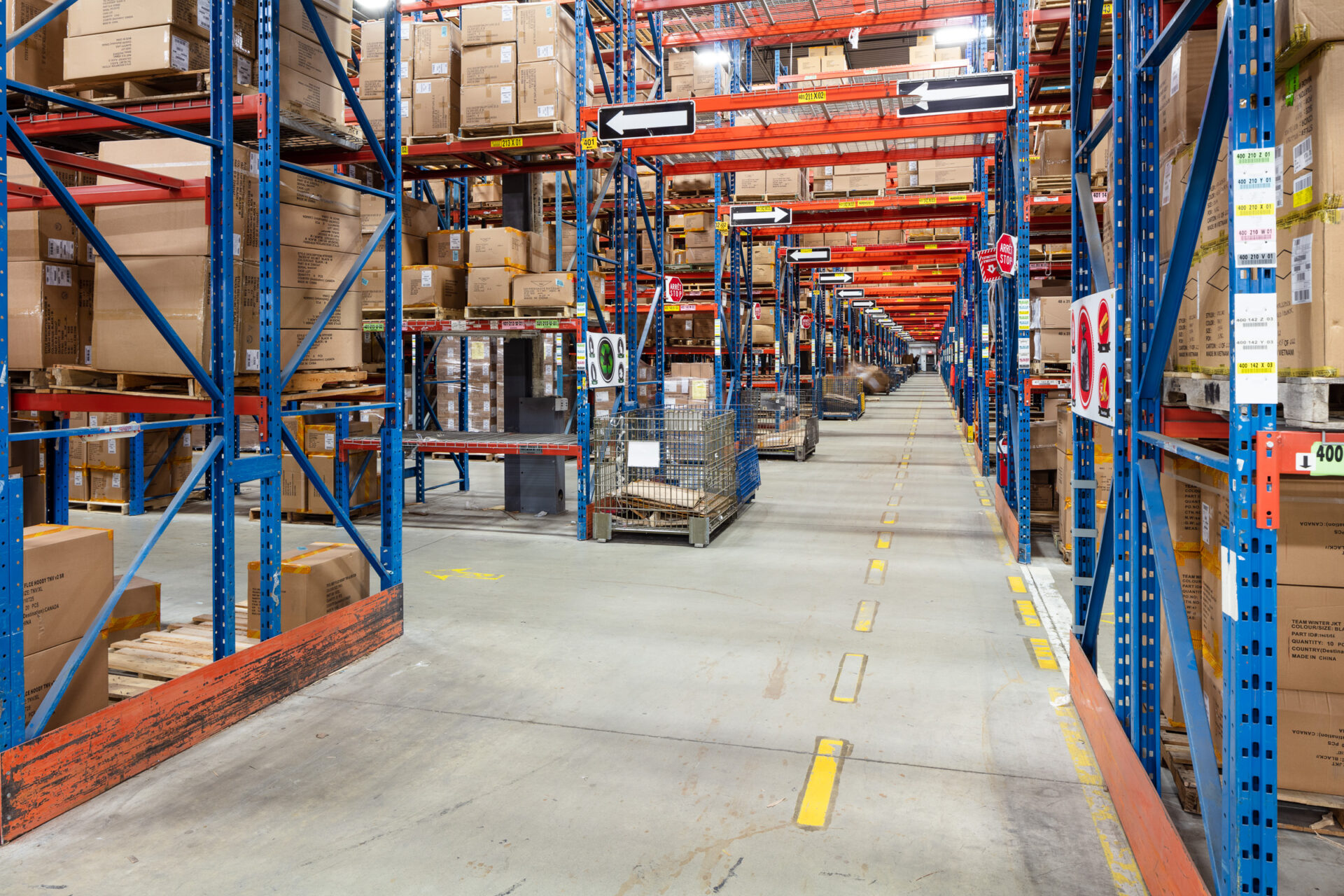Understanding Warehouse Aisles

By Marc Menard
December 21 | 3 min read
A Comprehensive Guide to Optimizing Your Warehouse Aisles

Deciding on the width of your warehouse aisles
Planning to expand your facility, move into a new space or re-engineer your current space to address future needs? If so, understanding all the possibilities in design allows you to make an informed decision. One area to focus on is to ensure you select the ideal aisle width for your operation. Many components can influence your selection.
- Forklift turning radius
- Automation equipment requirements
- Operators training
- Storage density
- Material flow and item velocity
- Operational flexibility ability to adapt in the future
The role of warehouse aisles
Beyond simply serving as pathways for workers, warehouse aisles play a pivotal role in shaping workflow, determining equipment suitability, and more. Each warehouse has unique spatial requirements and flow considerations, which is why understanding the types of aisleways is important. Let’s explore them together:
- Wide Aisle: These aisles, typically ranging from 12 to 13 feet wide, are the most common choice. They accommodate most equipment and are ideal for high traffic areas where multiple workers or forklifts need to travel down each aisle.
- Narrow Aisle: With widths between 8 and 10 feet, narrow aisles can increase your storage capacity by 20%. However, they require narrow aisle-compatible lifts, such as stand-up trucks and reach trucks (single or double reach). If your workers can navigate these aisles efficiently, they offer significant space-saving benefits. Remember that these tighter space configurations require additional safety measures such as barricades to ensure the safe movement of equipment and protection of workers.
- Very Narrow Aisle (VNA): For those seeking maximum space optimization, very narrow aisles, measuring 6 feet or less, present an opportunity to increase storage capacity by up to 50%. It is crucial to have skilled operators and equipment with precise maneuverability. VNA configurations often utilize a guidance system to keep lifts centered and prevent rack damage (guide rails or wire guidance). Vehicles operating in a VNA system are man-up order pickers, turret trucks, swing mast trucks and articulated forklifts.
Pro Tip
To ensure optimal functionality, align your aisles with the flow of goods and traffic. Consider whether parallel or perpendicular alignment to loading docks works best for your operations. Additionally, carefully plan aisle length and layout, tailoring them to the number of storage bays and overall warehouse dimensions.
Remember, well-designed aisles improve access, visibility, and navigation, reducing travel distance and simplifying picking tasks. It’s important to recognize that the ideal aisle type will vary based on the unique characteristics of your warehouse. By carefully considering the best fit for your specific needs, you might just be surprised at how much it can help productivity and inventory management.

Not sure where to start? Let an expert help you.
There are many options when it comes to finding the best design for your warehouse. At LIDD, we have a team of experts who specialize in warehouse design and installation. With decades of experience under their belts, they have witnessed best practices in action and understand that every operation is unique. Our experts are here to provide you with the guidance you need.
